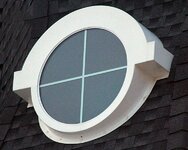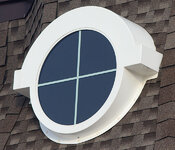Sylvanite
Member
My goal in this series of discussions is to explain the underlying concepts of photography so you'll understand when, why, and how to change your camera settings. I don't want to simply describe digital camera controls. However, I'm about to do just that. A member asked for a tutorial on "ISO Setting", so here it is.
I've characterized "ISO Setting" previously as controlling the digital camera sensor's sensitivity to light, but it's really more like amplification (or "gain" to the purists). Here's an analogy. Imagine you like to listen to two radio stations. One of them is nearby and you receive a clear, strong signal. The other one is distant and the signal is faint. In order to hear both at the same volume, you'll need to boost the weak signal more than the good one. When you amplify it, you introduce noise and distortion.
The same thing goes for a digital camera. Pretend that you take two pictures - one with ample light (exposure) and one with less. You can amplify the signal coming off the camera sensor so that the second image is equally as bright as the first, but you're going to introduce noise and distortion. That's what the ISO setting does. Just how much noise you get depends on the amount of amplification and the quality of the sensor.
Digital camera sensors are getting better and better. Some suffer very little image degradation, but it's still there. Professional quality camera bodies can handle high values, but many consumer cameras visibly lose image quality at ISO 400 or less. For the best photographs, you'll generally want to use the lowest ISO setting you can. For most digital cameras, that's ISO 100. If you have trouble getting a good exposure at ISO 100, you should first try to add more light. If you can, use a tripod and a slow shutter speed. Increase the ISO setting only as a last resort, and do so sparingly.
I hope that helps,
Eric
I've characterized "ISO Setting" previously as controlling the digital camera sensor's sensitivity to light, but it's really more like amplification (or "gain" to the purists). Here's an analogy. Imagine you like to listen to two radio stations. One of them is nearby and you receive a clear, strong signal. The other one is distant and the signal is faint. In order to hear both at the same volume, you'll need to boost the weak signal more than the good one. When you amplify it, you introduce noise and distortion.
The same thing goes for a digital camera. Pretend that you take two pictures - one with ample light (exposure) and one with less. You can amplify the signal coming off the camera sensor so that the second image is equally as bright as the first, but you're going to introduce noise and distortion. That's what the ISO setting does. Just how much noise you get depends on the amount of amplification and the quality of the sensor.
Digital camera sensors are getting better and better. Some suffer very little image degradation, but it's still there. Professional quality camera bodies can handle high values, but many consumer cameras visibly lose image quality at ISO 400 or less. For the best photographs, you'll generally want to use the lowest ISO setting you can. For most digital cameras, that's ISO 100. If you have trouble getting a good exposure at ISO 100, you should first try to add more light. If you can, use a tripod and a slow shutter speed. Increase the ISO setting only as a last resort, and do so sparingly.
I hope that helps,
Eric


